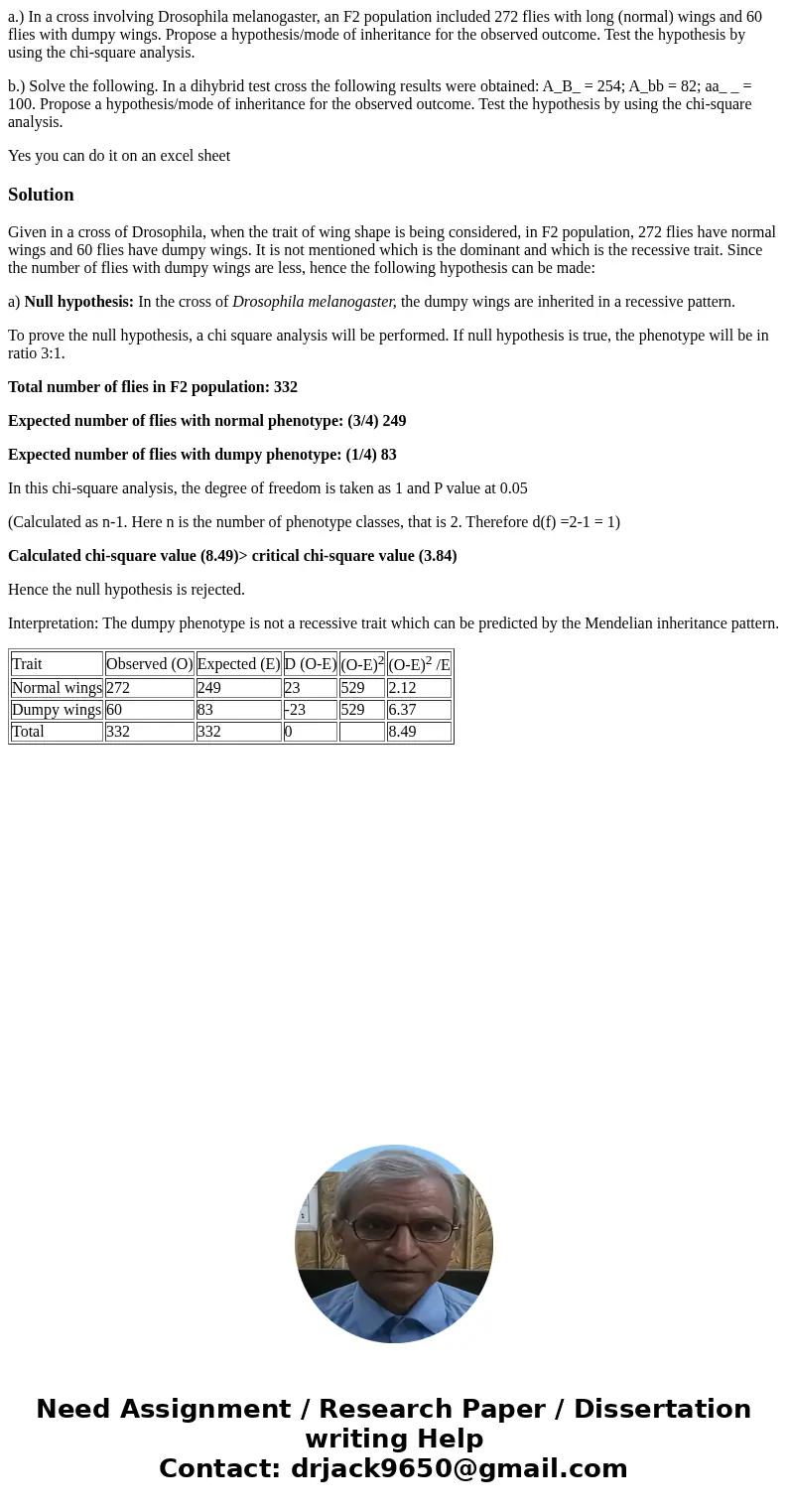a In a cross involving Drosophila melanogaster an F2 populat
a.) In a cross involving Drosophila melanogaster, an F2 population included 272 flies with long (normal) wings and 60 flies with dumpy wings. Propose a hypothesis/mode of inheritance for the observed outcome. Test the hypothesis by using the chi-square analysis.
b.) Solve the following. In a dihybrid test cross the following results were obtained: A_B_ = 254; A_bb = 82; aa_ _ = 100. Propose a hypothesis/mode of inheritance for the observed outcome. Test the hypothesis by using the chi-square analysis.
Yes you can do it on an excel sheet
Solution
Given in a cross of Drosophila, when the trait of wing shape is being considered, in F2 population, 272 flies have normal wings and 60 flies have dumpy wings. It is not mentioned which is the dominant and which is the recessive trait. Since the number of flies with dumpy wings are less, hence the following hypothesis can be made:
a) Null hypothesis: In the cross of Drosophila melanogaster, the dumpy wings are inherited in a recessive pattern.
To prove the null hypothesis, a chi square analysis will be performed. If null hypothesis is true, the phenotype will be in ratio 3:1.
Total number of flies in F2 population: 332
Expected number of flies with normal phenotype: (3/4) 249
Expected number of flies with dumpy phenotype: (1/4) 83
In this chi-square analysis, the degree of freedom is taken as 1 and P value at 0.05
(Calculated as n-1. Here n is the number of phenotype classes, that is 2. Therefore d(f) =2-1 = 1)
Calculated chi-square value (8.49)> critical chi-square value (3.84)
Hence the null hypothesis is rejected.
Interpretation: The dumpy phenotype is not a recessive trait which can be predicted by the Mendelian inheritance pattern.
| Trait | Observed (O) | Expected (E) | D (O-E) | (O-E)2 | (O-E)2 /E |
| Normal wings | 272 | 249 | 23 | 529 | 2.12 |
| Dumpy wings | 60 | 83 | -23 | 529 | 6.37 |
| Total | 332 | 332 | 0 | 8.49 |

 Homework Sourse
Homework Sourse